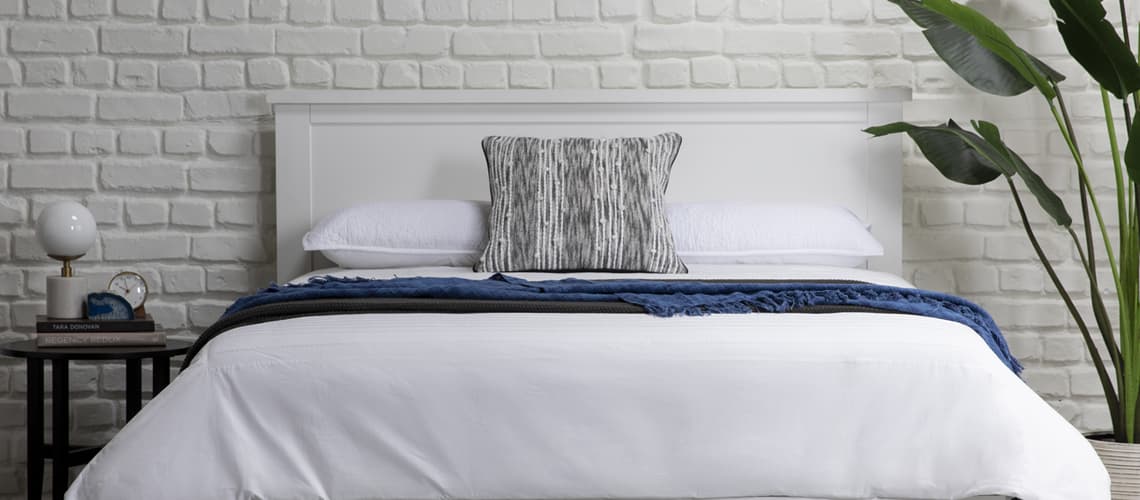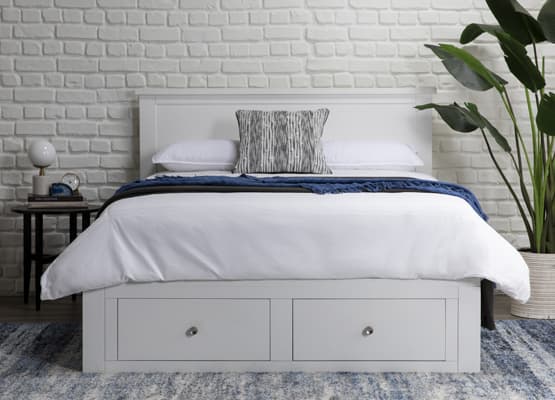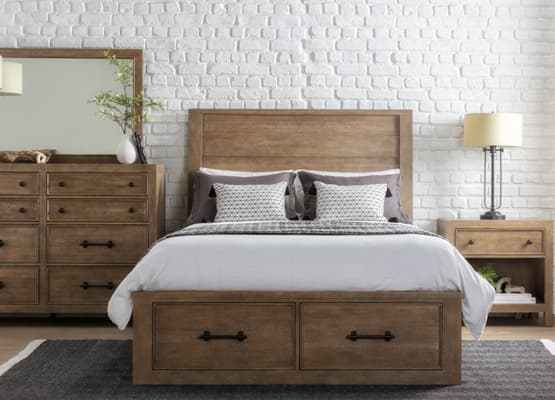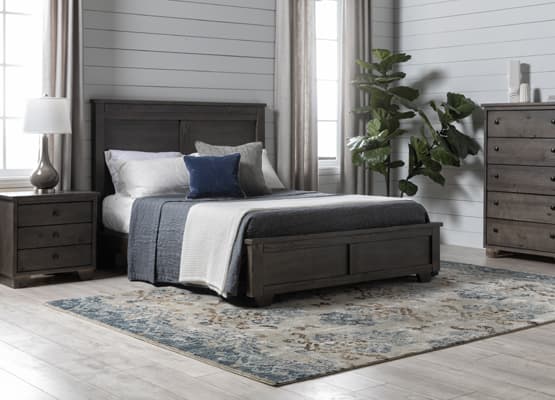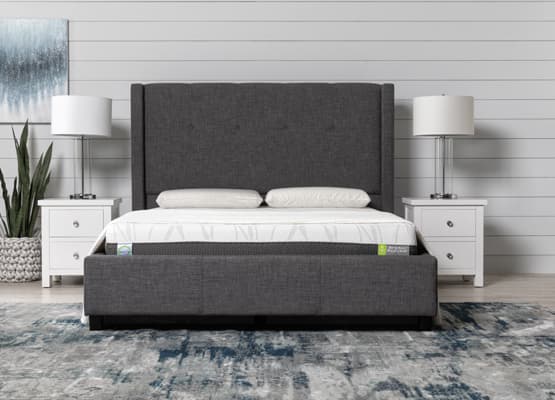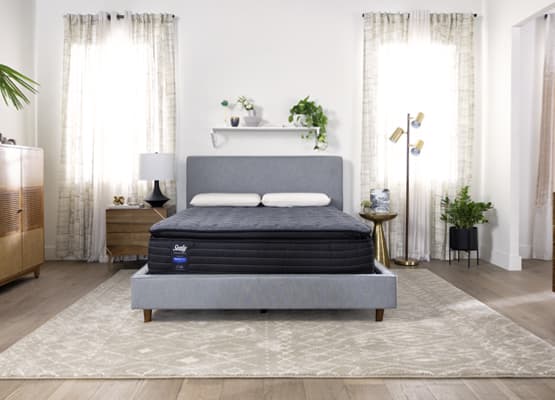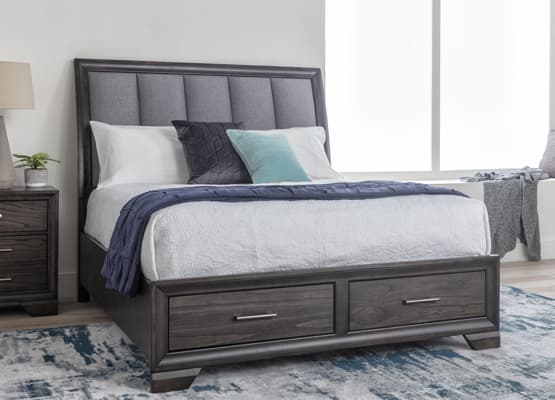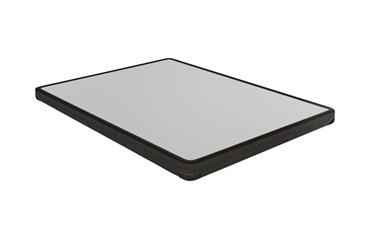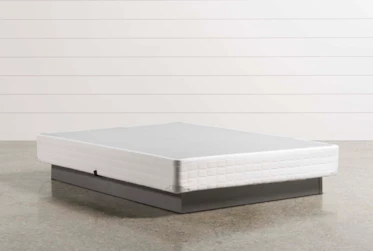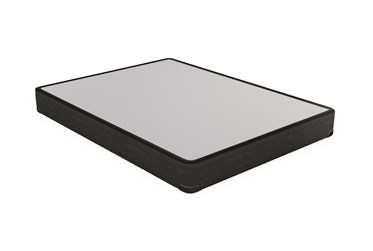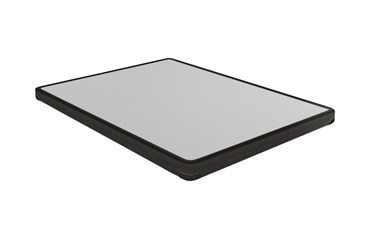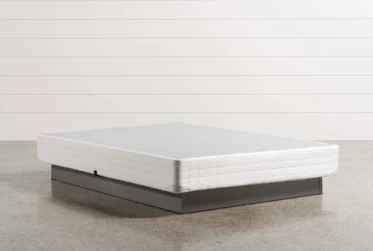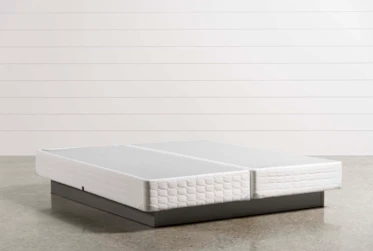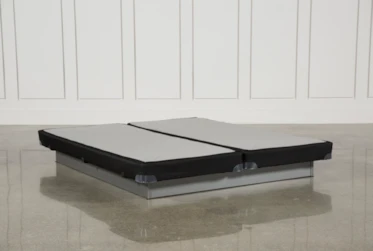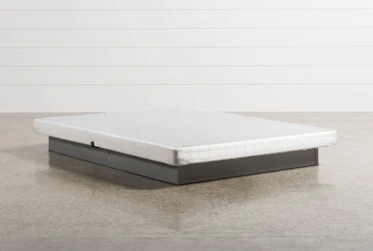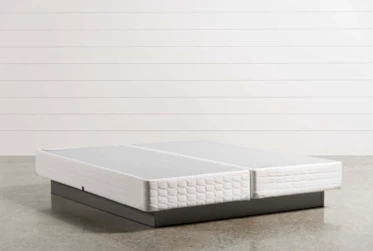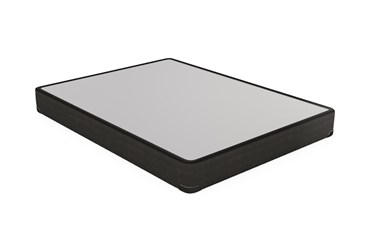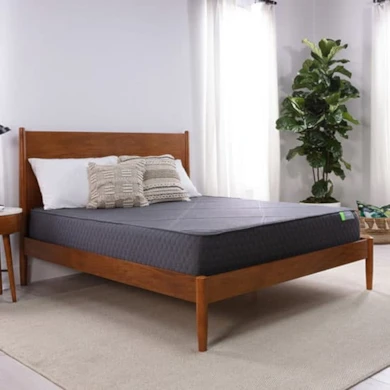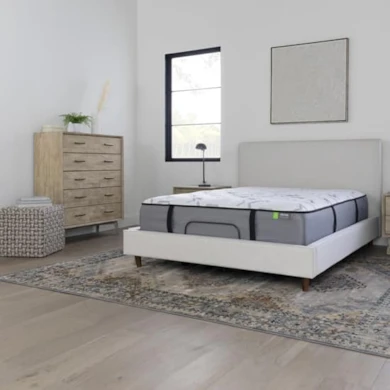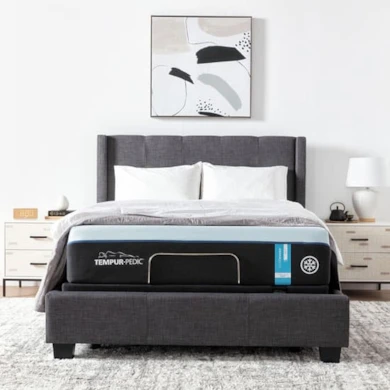How to Keep a Mattress From Sliding on Bed Frame
1. Get a mattress protector.
A mattress protector isn’t just for the top of your mattress. These necessary products actually wrap around all sides of a mattress, including the edges of the bottom. Since a protector is made of a fabric material, adding one to a sliding mattress can help create more friction, especially if your mattress is made of a silkier, more slippery material. Of course, mattress protectors aren’t just for good friction, though – and getting one is necessary for a whole host of other reasons, including keeping a clean bed.
If you already have a mattress protector and the mattress is still sliding, check the bottom of the protector, because it’s possible that it is worn out or thinning, which would mean it’s time for a replacement protector. Mattress pads also work, and many mattress pads double as protectors and vice versa. (If you don’t already have a protector, get one before trying any other step on this list!)
2. Get a foundation with a fabric top.
Another way to prevent a mattress from sliding is to lay the mattress on a fabric surface, which helps to increase friction. Many foundations and box springs are already ahead of this problem, designed with a fabric top that touches the bottom of the mattress. Combined with a fabric mattress protector, a foundation will help the mattress to grip onto your bed without sliding.
If you’re dealing with a sliding mattress but don’t want to raise your bed’s height any further than where it already is, try a bunky board: bunky boards can add a barrier between a mattress and a slippery bed frame, but come in low profiles for a shorter bed height. Many bunky boards are actually designed for bunk beds (which require a low mattress height) and come with profile heights of no more than two inches. Both bunky boards and foundations can also help add extra support to a mattress.
3. Check your bed frame.
Check your bed frame if your mattress continues to slide even with a foundation or bunky board and a mattress protector. Sometimes, a bed frame can be at a slant or slight slope – so slight, that you wouldn’t be able to feel it simply by lying in bed. Remove your mattress from the frame, and get down to the level of the top of the frame and try to gauge by eye whether or not sagging or sloping is present. Shake the frame a little to check for loose joints. If there is any sloping or sagging, you may need a new bed frame altogether (if it’s a newer frame, simply tightening the screws or bolts should solve the problem, but if you’ve had the frame for more than ten years, the easier route is a replacement).
4. Use a nonslip rubber mat.
A nonslip rubber mat is a cheap purchase and quality product for preventing slippage. (Find one at a craft store or hobby store.) Place it wherever your mattress continues to slip; if it’s sliding to the right, place the mat over the right side of the bed, and if it’s sliding to the left, place it over the left side of the bed. (Sometimes, a sliding mattress isn’t bound to one side or the other of a bed, in which cases it would be better to place two mats, one on each side of the bed for extra support; if rubber mats only come in large sizes, simply cut one into smaller pieces for targeted hold on both sides of a bed.) Because the silky material of a mattress is actually made of tiny fabric fibers, rubber, a non-slippery material, will catch onto the fibers and hold better than the top of a bed frame or box spring.
5. Clean the mattress.
If you’ve taken any sort of introductory philosophy course, then you’ll know about Occam’s Razor, which argues that the simplest explanation to a problem is often the most accurate. If your mattress sliding solutions aren’t working even if you seem to have tried every trick in the book, try going for the simpler: cleaning the bottom of the mattress. It might not seem like much in theory, but in practice, spending just a few seconds dusting off the bottom of a mattress and the top of a bed frame can remove sliding potential altogether. (In turning over your mattress for cleaning, you may also find a specific cause of the sliding you wouldn’t have seen otherwise, such as a trapped loose sheet of plastic or paper.) While you’re down there, don’t forget to spend some time sweeping the top of the bed platform, as well.
6. Use Velcro strips.
Velcro strips. These simple inventions have saved time and energy in putting on children’s shoes, securing computer charging cords together, and countless other tasks that make up the minutiae of everyday life. Why not, then, let them rescue your sliding mattress? For less than a few dollars, you can cure the headache once and for all: attach one end of a Velcro strip to the bottom of the mattress and the other end to the top of the bed’s platform; match them up so that the bed won’t move, no matter the movement that goes on above the bed. Buy Velcro strips at a craft or hobby store (and while you’re there, pick up a rubber non-slip mat (see tip above) for extra insurance. For best results, place more than one – a few along the bottom of the head of the mattress plus a few along the bottom of the foot of the mattress for good measure.How to Keep Mattress From Sliding on Metal Bed Frame
Mattresses can slide no matter the type of bed due to a host of reasons (a weak or sagging bed frame, a lopsided mattress or dusty platform, among others). Metal bed frames, though, are another monster altogether, since the combination of metal plus the silky underside of a mattress can mean slip city, tenfold. Perhaps the easiest way to combat sliding on a metal bed frame is to invest in a quality mattress protector designed for metal bed frames – these come with a tough gripper pad that goes between the bed and mattress, creating unstoppable friction. (Actually, these grip pads can be used for other furniture pieces, too, such as sofas and chairs, so even if your mattress isn’t sliding now, they’re a good household item to have on hand for any annoyingly loose seat cushions, in the meantime!)
How to Keep Mattress Topper From Sliding
Mattress toppers can also slide (sorry mattresses, you’re not the only center of attention!). If you’re having trouble with a topper, one thing to consider is a headboard, to give the topper a sort of shield, or something to bump against, preventing it from sliding completely off the mattress’s edge. Another possible solution for a sliding mattress topper? Investing in the right size topper (if the topper is currently sized incorrectly; a too-small topper will almost surely slide around the surface of a mattress, and a too-large one will tend to slide over the sides of a mattress. For a mattress topper, correct sizing means a Twin topper for a Twin bed, a Queen topper for a Queen bed, and so on.) Finally, try changing up the material of your bed sheet for a rougher fabric, to help create more hold and stick the mattress topper in place, once and for all.Help Stop the Sliding
— More Great Articles —
Products to Help Prevent Sliding
Read the Latest
Editorial Disclaimer: Articles featuring tips and advice are intended for educational purposes and only as general recommendations. Always practice personal discretion when using and caring for furniture, decor and related items.
